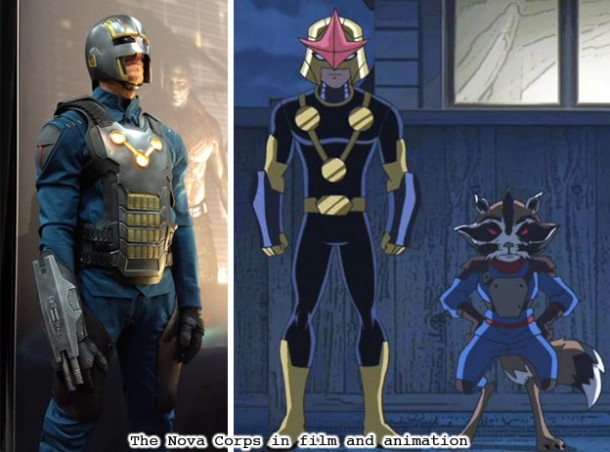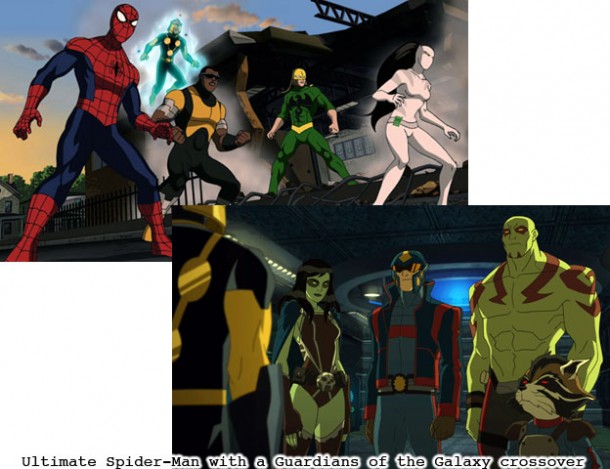This is part 3 of Noe Valladolid epic series on Marvel’s Agents of S.H.I.E.L D. If you are catching us in the middle, please check our PART ONE and PART TWO first.
The Agents of S.H.I.E.L.D. is shaping up to be a great series. It has the capacity to carry the Marvel banner for years. However, for younger audiences, it is on too late. It might as well have been CSI that they wanted to stay up for if their parents were going to allow them to see it. Instead, the Disney XD channel has been priming young fans on the Marvel canon for years.
It was not one single cartoon that Marvel Animation had focused on but instead several different series that were targeted for different ages. The youngest fans had the Super Hero Squad Show. The playful designs, lighthearted action and jokes made it the most non-threatening retelling of some of the most heated rivalries ever told. Older fans were primed for the action of Avengers: Earth’s Mightiest Heroes (AEMH). The design was rooted somewhere in between the classic Kirby style and the more modern minimalism of Bruce Timm (creator of the Batman Animated series). Fans were split on the designs, some liked the nod to classic costumes but expected something more bold, similar to Timm’s run with the Justice League.
AEMH went on for several seasons. Characters that were rare for mainstream audiences were introduced. In some cases a good story was pulled from villains that were rare even to comic book fans. The team at Marvel Animation had certainly done their homework and were eager to take chances on characters that were otherwise second or even third-tier bad guys. A classic group of rivals was eventually brought together during the seasons. With a mix of science, magic and military training The Masters of Evil perfectly balanced out the Avengers in every regard.
The series was not necessarily too dramatic but often found ways to give each character personality. Hawkeye would constantly question the decisions of the leaders, Iron Man was vain and Thor and the Hulk were best pals. The two most powerful team members could often be seen hanging out or playing games with each other. This was undoubtedly based on the friendship that Thor voice actor Travis Willingham and Hulk actor Fred Tatasciore had struck up. The series was eventually replaced by the slightly more mature Avengers Assemble. In both shows there was a group that had to be brought in to remind viewers that the action did not stop on the Earth.
The Guardians of the Galaxy had made their presence known well before the live action film’s release. Despite the visual differences between the movie Guardians and the animated ones, the core personality of each character remained. Moreover, the Guardians of the Galaxy were considered a a sort of cosmic counterpart to the Avengers The Guardians reminded viewers that the battle for good and evil happens in every corner of the galaxy.
Like the Avengers, they also had friends they could call on. Some friends had super powers and some were simply police officers, military or S.H.I.E.L.D. agents. Friends of the Guardians had powers that defied science and magic. Some were brave men and women that donned helmets and suits of armor that granted them amazing powers. These people became members of a galactic peace-keeping group known as the Nova Corps. They were like space cops. Readers that were more familiar with DC comics could liken the Nova Corps to the Green Lanterns.
In the live action movie the Nova Corps were organized but their uniforms did not grant them any special powers. The animated version of the corps retained the powers from the comic books. The could fly, shoot beams of energy and be protected from the vacuum of space and many forms of radiation while in uniform.
In the cartoons there was a sole Nova member named Sam Alexander that remained on Earth. Sam was voiced convincingly by Logan Miller. This character was unique because he was of mixed ancestry. Positive (and powerful) minority characters were few and far between for many comic books. Every Hispanic character was a welcome addition. Sam discovered that his father was a former Nova Centurion. As such he had the qualities that the Corps were looking for, in particular the way to unlock his powers. Sam was trained by Gamora and Rocket Racoon in the use of his powers. Since he was young he needed to gain more experience and tap the full potential of the Nova helmet. Sam was written into the Ultimate Spider-Man animated series. He was the youngest member in a group that included Iron Fist, Power Man, White Tiger and Spider-Man. Despite being young he was incredibly powerful and would eventually become the most powerful member of the team.
Ultimate Spider-Man was written as a series for older teens. The character design and challenges that the characters faced were believable for younger, less experienced heroes. It was easy for audiences to identify with the team. They had the same challenges of growing up, the uncertainties of becoming a responsible adult without quite knowing what the future held for them. These characters also had to deal with their public identity. They had to keep their secret from their friends while dealing with peer pressure and relationships.
They had guidance from S.H.I.E.L.D. and specifically a mentor with Agent Coulson. He knew that the Avengers would someday need new recruits so getting a jumpstart on the next generation would pay off down the line. By making sure that characters appeared on several shows, and were usually voiced by the same actors, audiences learned who the major players were in the Marvel Universe. They would not be surprised if Nova eventually had the Guardians meet Spider-Man. Sadly that crossover will probably never happen in the movies.
The various animated shows were able to tell stories at a pace much faster than the films could. In fact, fans of Avengers Assemble were watching a story arc featuring the alien Thanos and the Infinity Gems last fall. A movie version with roughly the same story is expected to be the announced for Avengers 3. Marvel Animation was not focused solely on producing some quality shows. The studio also released one-shot animated features, a few of which were far more mature in writing and content than any televised show. These direct-to-DVD films were a chance to tell a feature-length story with a lesser known character.
Some of the best ones, like Doctor Strange, could almost serve as guidelines for a live action feature on the same character. The most important thing that Marvel Animation did was bring the massive library of heroes and villains that made up the universe to life. Even if the characters only appeared for a moment or two they were considered to be important enough for audiences to become aware of their presence. With a broader picture audiences were prepared for the films to go in any direction. The icons did not necessarily have to come together but each character had enough backstory to stand on his or her own.
Some characters were prime for comedy (like Ant-Man and Deadpool) and some would remain tragic, like the Hulk. The Agents of S.H.I.E.L.D. was advancing at its own pace, nowhere near as rapid as the cartoon shows but still fast enough to keep audiences engaged. One of the most important events in the show happened during the first season. It had the potential to not only change the direction of the series but of the films as well. The next blog will explore this event.
How did you get hooked on Marvel?





You must be logged in to post a comment.